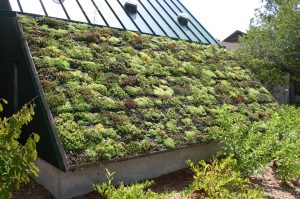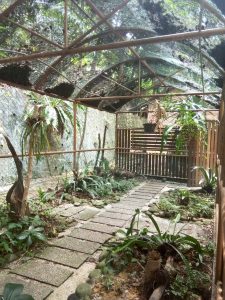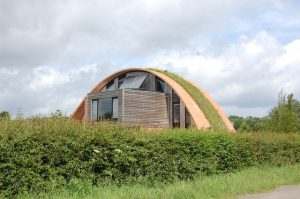Lauren Lehman
Eco-Homes
Lauren Lehman
Preface:
My name is Lauren Lehman, and this portfolio is called Eco-Homes: Minimizing Impact, Maximizing Living. The licensing I will use is CC-BY-SA.
Introduction:
The focus of this portfolio is to outline the ways in which eco-homes not only start to create a cleaner environment on a personal level, but are a new way to create a closer bond with nature in someone’s own home. Eco-homes are not as established as other types of homes within architecture, and therefore are open to more experimentation when being created. Aspects of eco-homes can also be incorporated in already built houses and buildings throughout many different environments. Eco-homes are also influenced by other forms of eco-living spaces. In order to show this, I have included three photos that show different ways eco-homes can be integrated and seen all over the world.
Themes:
The main themes explored in this portfolio are how eco-homes are not only a cleaner way of living for oneself, but for the environment as well. Eco-homes support the idea of living more sustainably, and in some cases completely independently. There are some eco-homes that can provide everything needed to sustain a modern life, and others that use modern aspects and technology to work towards this goal. Eco-homes also create a connection to nature through living, as it becomes a part of everyday life. This connection creates a deeper understanding and appreciation for nature, as it becomes art in or around one’s own home.
Analysis:
Each of the following photos outlines a different way eco-homes can be seen in different cultures and areas and how they have impacted the environment around them.

The image above shows a roof that is located at the Virginia Living Museum in Virginia in the United States. This building is not only eco-conscious on the outside but throughout as well. The building is made from recycled and sustainable materials. On the outside, it displays plants that are native to Virginia, showing that these eco-homes and buildings are designed specifically to the places they are found. This also helps support the local ecosystem. The people who visit this area are able to educate themselves and learn about the carbon footprint they are producing in their traditional homes, and how to reduce it by introducing aspects of an eco-home into their lives.
The building and roof act not only as an educational resource but also an art form. The green roof is displayed in a “living museum” so those who visit are able to appreciate it. The roof being on display as art allows viewers to see nature as something more- as something beautiful. It opens a new pathway to what can be seen and appreciated as art, and how eco-homes and eco-living are becoming a part of it.

Represented here is part of the KL Forest Eco Park located in the large city of Kuala Lumpur. Kuala Lumpur is a major city, and this eco park provides a green space for visitors and locals alike to catch a breath. The eco park gives those who visit a sense of what a greener life is like, with breathtaking views and educational stops throughout. The park is filled with native plants, and gives a home to many local wildlife species. The fern house specifically shows how easy it is to fill even a small space with plants and greenery, and is made of materials that could be used at home. Once again, the eco space is tailored to the area it is located in, meeting the needs for a place like Kuala Lumpur.
The amount of greenery found throughout the park is a change of pace for the bustling city of Kuala Lumpur. One goal that the park achieves is raising awareness for how important it is to include nature in everyday life, and tries to educate those who visit on how to do this. The park is also art in and of itself because of the beauty it brings to the surrounding area, being the focus for over thousands of pictures on social media platforms.

The house at Crossway is the best example of an eco-home in action in this set of photos. The house is located in Kent in the United Kingdom. It combines aspects of the two photos before to create a livable eco-home. The home has an arched roof, lined with greenery, that supports wildflowers of the area, and also regulates temperature inside the home. The house is a certified sustainable living space and has many attributes that allowed for its certification. It has solar panels, handmade bricks, rainwater collection, recycled insulation, recycled flooring, etc. This eco-house is a prime example of how to minimize impact while maximizing living, as the carbon footprint produced from this home is significantly less than a traditional home.
The home was designed by renowned architect Richard Hawkes, who focuses on sustainable living in his work. Architecture is one form of art that can be interacted with, and can most certainly be appreciated by the masses. Architecture as an art form intertwined with nature can create a deeper understanding that something that is so standard as living in a house can become so much more. It can become a cleaner way to live and support the environment.
Application:
Keeping the environment clean and lessening the impact that people produce on the environment is important in making sure that the world continues to thrive. While it may seem hard to start, or unattainable, there are things that people can incorporate into their homes everyday to work towards this goal. Things like solar panels, planting native flora and fauna, implementing a green outdoor space, etc. Once the relationship between nature is formed within a home, it is easier to see how important it is to continue creating a cleaner environment. There are many ways that people support their environments; gardening, activism, painting and murals, music, etc., but eco-homes and support behind closed doors is not talked about enough. The ability to also create this bond of nature through the home and incorporate that in art is also a special one, because it becomes so unique and can inspire others to do the same. Eco-homes are important because bettering the environment should not be exclusively a community project, but a personal one as well.

